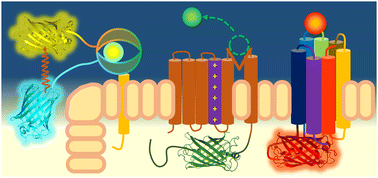Fluorescent proteins and genetically encoded biosensors†
Abstract
The genetically encoded fluorescent sensors convert chemical and physical signals into light. They are powerful tools for the visualisation of physiological processes in living cells and freely moving animals. The fluorescent protein is the reporter module of a genetically encoded biosensor. In this study, we first review the history of the fluorescent protein in full emission spectra on a structural basis. Then, we discuss the design of the genetically encoded biosensor. Finally, we briefly review several major types of genetically encoded biosensors that are currently widely used based on their design and molecular targets, which may be useful for the future design of fluorescent biosensors.



 Please wait while we load your content...
Please wait while we load your content...